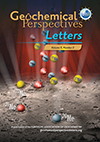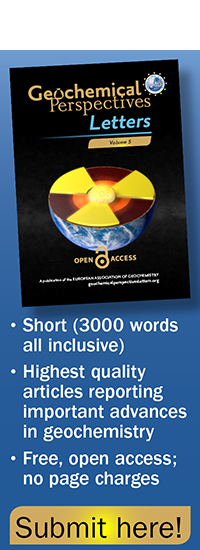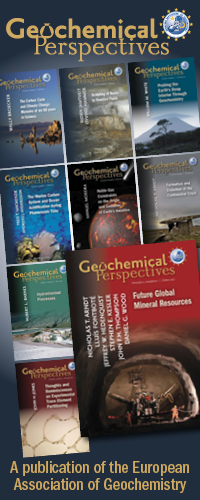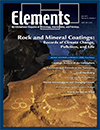
The heterogeneous nature of Fe delivery from melting icebergs
M.J. Hopwood, C. Cantoni, J.S. Clarke, S. Cozzi, E.P. Achterberg
The micronutrient iron (Fe) can be transported from marine terminating glaciers to the ocean by icebergs. There are however few observations of iceberg Fe content, and the flux of Fe from icebergs to the offshore surface ocean is poorly constrained. [...]
Reorganisation of Earth's biogeochemical cycles briefly oxygenated the oceans 520 Myr ago
T.W. Dahl, J.N. Connelly, A. Kouchinsky, B.C. Gill, S.F. Månsson, M. Bizzarro
The Phanerozoic radiation of bilaterian animals has been linked to oxygenation of Earth's oceans, due to the oxygen demand of the evolving animal ecosystems. However, how early animals may have regulated Earth’s surface oxygen budget via self-stabilising feedbacks is poorly understood. [...]
Not so non-marine? Revisiting the Stoer Group and the Mesoproterozoic biosphere
E.E. Stüeken, E.J. Bellefroid, A. Prave, D. Asael, N.J. Planavsky, T.W. Lyons
The Poll a’Mhuilt Member of the Stoer Group (Torridonian Supergroup) in Scotland has been heralded as a rare window into the ecology of Mesoproterozoic terrestrial environments. Its unusually high molybdenum concentrations and large sulphur isotope fractionations have been used as evidence [...]
Global climate stabilisation by chemical weathering during the Hirnantian glaciation
P.A.E. Pogge von Strandmann, A. Desrochers, M.J. Murphy, A.J. Finlay, D. Selby, T.M. Lenton
Chemical weathering of silicate rocks is a primary drawdown mechanism of atmospheric carbon dioxide. The processes that affect weathering are therefore central in controlling global climate. A temperature-controlled “weathering thermostat” has long been proposed in stabilising long-term climate, but without definitive evidence from the geologic record. [...]



































